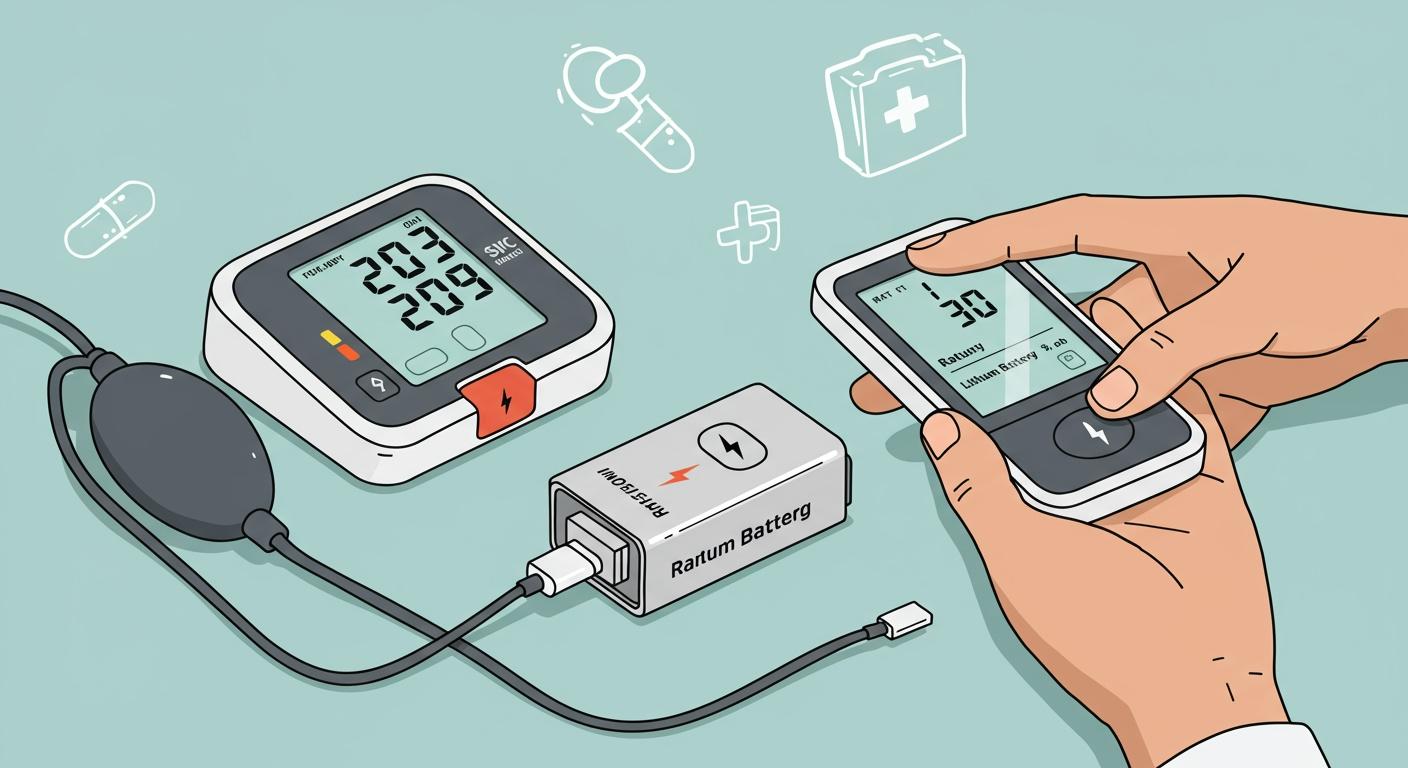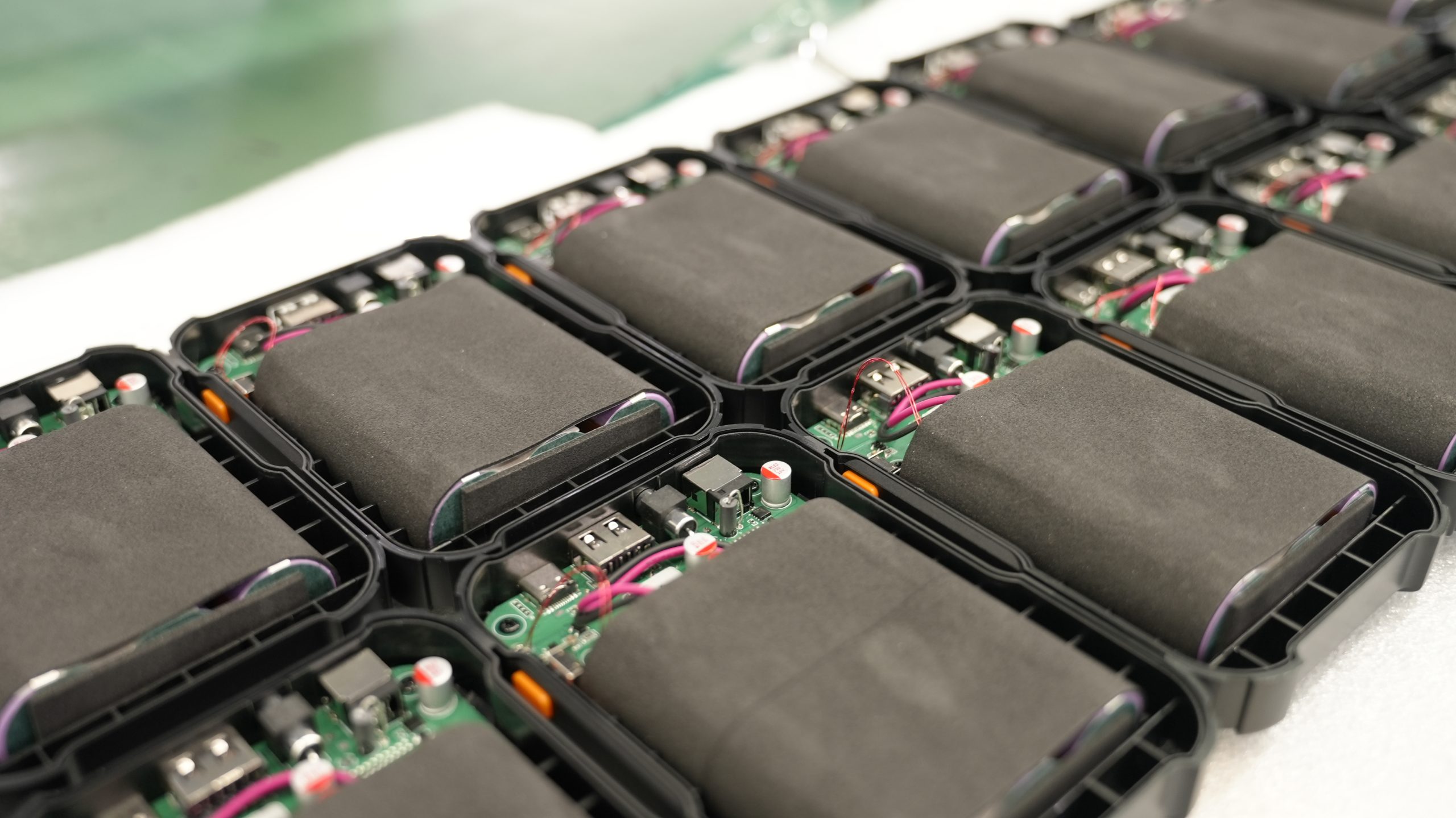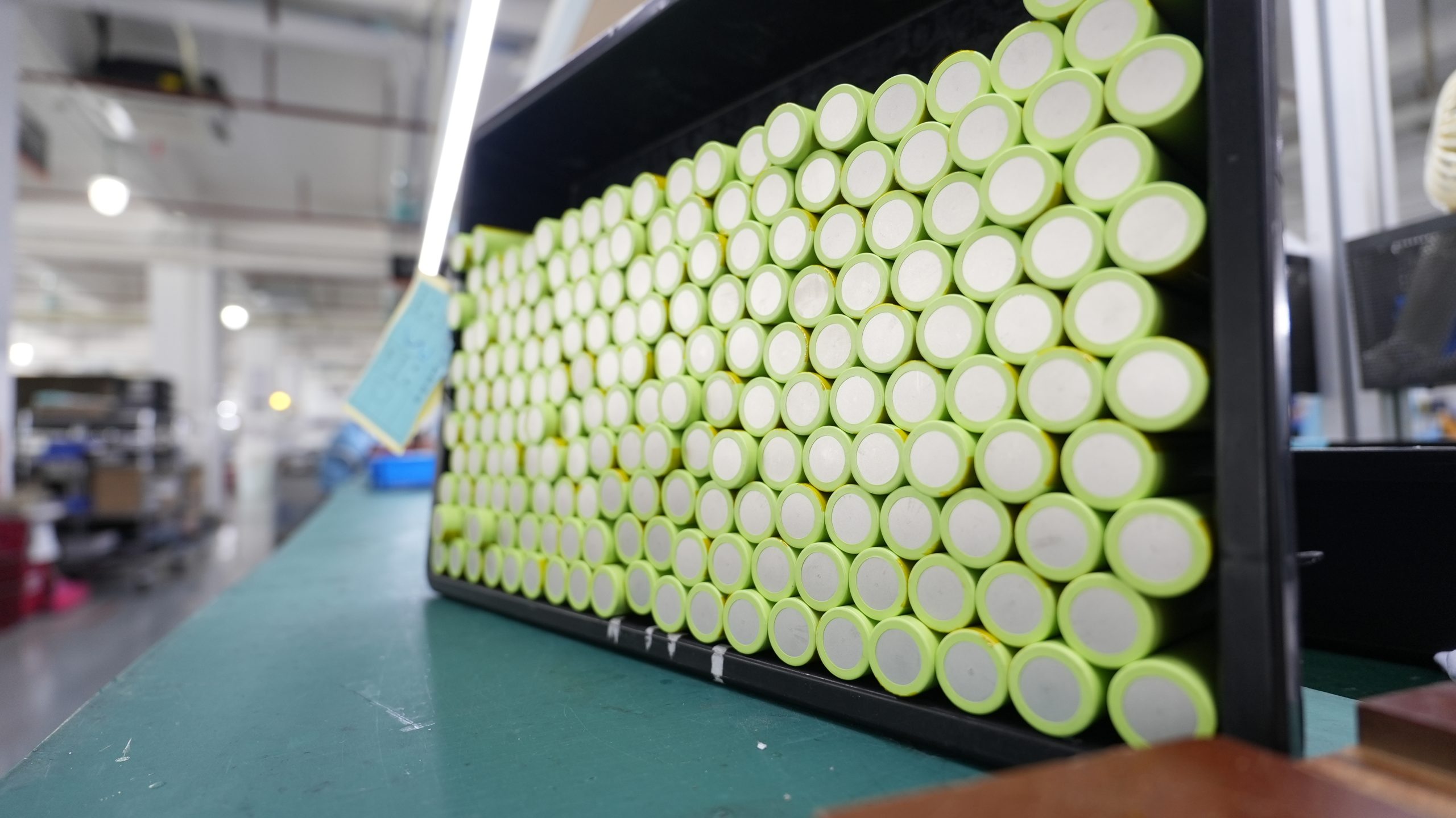
Imagine a nurse using portable diagnostic equipment during an emergency. Fast-charging lithium batteries keep devices ready, boosting healthcare reliability and patient care. You see fewer delays and more consistent care. The table below shows how rapid charging improves device uptime in portable healthcare environments:
Feature | Impact |
|---|---|
Fast-charging lithium batteries | Faster charging than lead-acid batteries. |
Portable device uptime | Reduced waiting, increased availability in healthcare settings. |
Patient care safety | Continuous power supports patient care and safety. |
Key Takeaways
Fast-charging lithium batteries significantly reduce downtime for portable medical devices, ensuring they are ready for use when needed.
Reliable power from lithium batteries enhances patient care by supporting continuous operation of critical medical devices.
Adhering to safety standards and regulations is essential for using lithium batteries in healthcare, ensuring patient safety and device reliability.
Part 1: Role of Fast-Charging Lithium Batteries
1.1 Device Uptime
You rely on portable medical devices to deliver care without interruption. Fast-charging lithium-ion batteries play a vital role in keeping these devices ready for use. When you use healthcare battery solutions with advanced lithium-ion batteries, you see a dramatic reduction in equipment downtime. These batteries charge much faster than traditional options, so your devices spend less time plugged in and more time in action.
Here is a table that highlights how fast-charging lithium-ion batteries reduce downtime in healthcare environments:
Benefit | Explanation |
|---|---|
Faster Charging Times | Lithium-ion batteries charge significantly quicker than traditional batteries, reducing wait times. |
Longer Lifespan | They last longer, minimizing the frequency of replacements and ensuring equipment availability. |
Reliable Power Output | Consistent power delivery keeps critical devices operational, enhancing patient care and safety. |
Reduced Downtime Impact | Shorter charging times mean less delay in patient treatment, crucial in healthcare settings. |
You can see that healthcare battery solutions with lithium-ion batteries offer both speed and reliability. This means your staff can respond quickly to patient needs, and your equipment stays available when it matters most.
1.2 Reliability in Care
Reliable power is essential for medical devices in every healthcare setting. Lithium-ion batteries provide stable and consistent energy, which supports real-time monitoring and rapid response. When you choose healthcare battery solutions, you benefit from lower internal resistance in lithium-ion batteries. This feature allows for more efficient energy transfer and less energy loss during charging.
Internal resistance in lithium-ion batteries affects the flow of electrical current during charging and discharging.
Lower internal resistance enables more efficient energy transfer, reducing energy loss during charging.
This efficiency directly correlates with faster charging times.
With these advantages, your medical devices remain operational even during high-demand periods. You avoid unexpected shutdowns and maintain a high standard of care. Healthcare battery solutions built on lithium-ion technology ensure that your equipment delivers reliable performance shift after shift.
1.3 Patient Outcomes
When your devices stay powered and ready, patient outcomes improve. Fast-charging lithium-ion batteries support continuous operation of critical medical devices, which leads to better care and faster response times. Clinical studies show that improved device uptime from healthcare battery solutions directly benefits patients, especially in emergency and critical care settings.
Evidence Type | Description |
|---|---|
Battery Technology | Fast-charging lithium-ion batteries enhance device uptime and reliability. |
Patient Outcomes | Improved device uptime leads to better patient outcomes in critical care settings. |
Market Demand | Increased demand for portable medical devices necessitates reliable power sources. |
You meet the growing demand for portable healthcare solutions by choosing lithium-ion batteries. These batteries help you deliver consistent, high-quality care and support positive patient outcomes. Healthcare battery solutions with lithium-ion batteries give you the confidence that your devices will perform when your patients need them most.
Part 2: Lithium-Ion Battery Technology

2.1 How It Works
You depend on lithium battery technology for portable healthcare devices because it offers high energy density and lightweight design. Lithium-ion battery packs use advanced chemistry to store and release energy efficiently. Low internal resistance allows these batteries to deliver power quickly and recharge at higher rates. This feature supports fast charging and minimizes heat generation, which helps extend battery life.
Here is a comparison of common lithium battery chemistries used in healthcare applications:
Battery Type | Platform Voltage (V) | Energy Density (Wh/kg) | Cycle Life (cycles) |
|---|---|---|---|
Lithium Cobalt Oxide (LCO) | 3.7 | 150-200 | 500-1,000 |
Lithium Iron Phosphate (LFP) | 3.2 | 90-160 | 2,000-7,000 |
Lithium Nickel Manganese Cobalt (NMC) | 3.7 | 150-220 | 1,000-2,000 |
You see that lithium-ion battery packs offer a balance of energy density and cycle life, making them ideal for medical devices that require reliability and portability.
2.2 Fast Charging Features
Lithium battery technology enables fast charging through several technical mechanisms. Optimized battery chemistry, such as silicon-based anodes and nickel-rich cathodes, improves lithium movement and boosts charging speed. Smart battery management systems (BMS) monitor and regulate charging parameters to prevent overheating and extend battery life. High-power charging stations also support rapid charging by delivering higher wattage.
Electrolyte design enhances thermodynamic properties for better fast charging.
Solid-state batteries promise even faster charging by replacing liquid electrolytes with solid materials.
Low internal resistance in lithium-ion battery packs allows for higher current densities and reduces heat during charging. This efficiency is crucial for healthcare devices that need quick turnaround and reliable operation.
2.3 Safety and Management
You must prioritize safety when using lithium battery technology in healthcare. Medical devices follow strict standards like ANSI/AAMI ES 60601-1 and IEC 62133 to ensure safe operation. Device design prevents the use of unapproved batteries and chargers, reducing risks of thermal events. Clear instructions for use help you store, charge, and maintain lithium-ion battery packs safely.
Battery management systems play a key role in safety. They continuously monitor voltage, current, temperature, and state of charge. Advanced algorithms optimize charging and predict battery health. For more details on BMS, visit this resource.
Aspect | Description |
|---|---|
Monitoring Parameters | BMS tracks voltage, current, temperature, and state of charge for safety. |
Thermal Management | Regulates battery temperature to prevent overheating. |
Advanced Algorithms | Optimizes charging and predicts battery health. |
Tip: Always follow manufacturer guidelines for charging and maintenance to maximize safety and performance.
Part 3: Advantages in Healthcare Applications
3.1 Rapid Charging
You see the impact of rapid charging every day in healthcare environments. Portable devices with lithium battery packs recharge quickly, which means you spend less time waiting and more time delivering care. When you use portable devices in hospitals and clinics, you notice that fast charging helps you respond faster to emergencies and routine tasks.
Portable devices stay available for use, reducing downtime and improving medical equipment reliability.
Rapid charging supports continuous patient care, especially during power outages or high-demand periods.
Battery-backed chargers provide resilience, so your portable devices remain operational even when the main power supply fails.
Hospitals benefit from sustainable practices, such as electric vehicle charging, which supports environmental goals and strengthens infrastructure reliability.
For more on sustainability in healthcare, visit Our Approach to Sustainability.
You rely on portable devices for diagnostics, monitoring, and emergency response. Rapid charging ensures these applications run smoothly, helping you deliver better care and improve patient experiences.
3.2 Efficiency and Maintenance
Portable devices powered by lithium battery packs offer clear advantages in efficiency and maintenance. You do not need to schedule cycling or total discharges, which gives you flexibility in how and when you recharge your portable devices.
Lithium-ion batteries have no memory effect or voltage depression, so you get maximum uptime from your portable devices.
The low self-discharge rate means you do not need frequent charge top-ups, reducing your maintenance workload.
Longer cycle life leads to fewer battery replacements, which saves money and minimizes disruptions in critical care.
Extended lifespan of lithium battery packs results in less downtime for maintenance, ensuring uninterrupted patient care.
Reduced frequency of battery replacements helps you maintain continuous operation of portable devices in healthcare applications.
You see that portable devices with lithium battery packs require less attention and fewer resources for maintenance. This efficiency allows you to focus on patient care and operational excellence.
3.3 Safety and Compliance
Safety and compliance remain top priorities when you use lithium battery technology in portable healthcare applications. You must follow strict standards to ensure your portable devices operate safely and reliably. The following table summarizes key regulatory standards for lithium battery packs in medical devices:
Standard | Description |
|---|---|
IEC 62133 | International standard for safety of secondary cells and batteries, includes biocompatibility and safety features for medical use. |
UL 2054 | Safety standard for batteries, covering electrical, mechanical, environmental, thermal safety, and performance. |
IEC 60601-1 | General requirements for basic safety and essential performance of medical electrical equipment, including batteries. |
ISO 10993-1 | Guidelines for evaluating biological safety of medical devices, ensuring batteries do not cause adverse reactions. |
ISO 13485 | Quality management system requirements for manufacturers to ensure safe and reliable battery production. |
You must select portable devices that meet these standards to protect patients and staff. Compliance with these regulations ensures your portable devices deliver reliable performance and maintain medical equipment reliability. When you consider sustainability and responsible sourcing, you support healthcare goals and reduce environmental impact.
Learn more about sustainability in lithium battery packs at Our Approach to Sustainability.
Portable devices with lithium battery packs help you meet safety, compliance, and sustainability requirements in healthcare applications. You gain confidence in your equipment and deliver consistent care.
Part 4: Applications of Fast-Charging Lithium Batteries

4.1 Diagnostic Devices
You depend on portable diagnostic devices for point-of-care diagnostics and rapid patient assessment. Fast-charging lithium batteries power these tools, including mobile x-ray equipment, ensuring you can perform tests without delay. The lightweight design of a custom battery pack allows you to move devices easily between patient rooms. You benefit from long-lasting battery life, which means fewer interruptions during critical healthcare applications. Mobile x-ray equipment with fast-charging batteries supports continuous operation, even in busy hospital settings. These features help you deliver accurate results quickly, improving patient care and workflow.
4.2 Mobile Workstations
You use mobile medical equipment, such as medical carts and mobile workstations, throughout your facility. Fast-charging lithium batteries enhance the functionality of these carts, making them ready for use in fast-paced environments. The table below highlights key features and benefits:
Feature | Benefit |
|---|---|
Rapid Charging | Ensures medical carts are ready for use in critical situations. |
Longer Run Times | Supports continuous operation during long shifts. |
Reduced Maintenance Costs | Lowers total cost of ownership due to fewer replacements. |
Higher Safety | Maintains stability at higher temperatures, reducing risks for critical equipment. |
You experience fewer disruptions and lower maintenance costs. Fast-charging capabilities ensure immediate availability, which is essential for critical healthcare applications.
4.3 Emergency Equipment
You rely on life-saving devices, such as defibrillators and emergency monitors, to support critical patient care. Fast-charging lithium batteries provide reliable power for these devices, allowing you to respond quickly during emergencies. Lightweight batteries make it easier to transport critical equipment to different locations. In implantable devices like pacemakers, lithium batteries deliver stable output voltage and long cycle life, supporting continuous monitoring and regulation of heart rhythms. For hearing aids, compact lithium batteries enable longer usage times and rapid recharge, ensuring patients receive uninterrupted support.
Tip: Choose lithium batteries for your critical healthcare applications to ensure your devices remain ready and reliable at all times.
Part 5: Adoption Considerations
5.1 Design and Integration
When you integrate fast-charging lithium battery packs into medical devices, you face several challenges. You must manage heat effectively to keep batteries safe and reliable. Temperature changes during charging and discharging can affect performance. You need to design devices that meet strict standards like IEC 60601-1 and IEC 62133. These standards set limits for temperature and safety to prevent thermal runaway.
You also need to consider energy density. Advanced medical devices require high energy, but compact designs make integration difficult. You work with battery specialists and materials scientists to create solutions that fit small spaces without losing reliability. Miniaturization helps you meet the needs of healthcare facilities. You select materials carefully to ensure biocompatibility, using composite gel electrolytes and biodegradable alloys to protect patients.
Effective thermal management keeps batteries safe.
Compact designs challenge energy density and reliability.
Collaboration with experts supports innovation in the healthcare industry.
5.2 Regulatory Compliance
You must follow many regulations when you use lithium battery packs in healthcare facilities. The table below shows key organizations and their roles:
Regulatory Body / Organization | Role / Scope of Oversight |
|---|---|
U.S. Food and Drug Administration (FDA) | Regulates medical devices and batteries for safety and performance. |
IEC | Sets battery safety standards for healthcare industry devices. |
UL | Provides safety standards for lithium batteries. |
ANSI/AAMI | Develops standards for medical electrical equipment. |
DOT, IATA, ICAO, IMO | Regulate transport and shipping safety for lithium batteries. |
CSA Group | Assists with certification and compliance. |
You must meet these standards to protect patients and staff. Medical lithium batteries require stricter safety and reliability than consumer electronics. The table below compares safety standards:
Feature | Medical Lithium Batteries | Consumer Electronics Batteries |
|---|---|---|
Regulatory Standards | IEC 60601, ANSI/AAMI ES 60601-1, UL2054 | Less rigorous standards |
Safety Priorities | Patient safety, device reliability | Performance focus |
Electromagnetic Compatibility | Mandatory | Not required |
Thermal Management | Advanced systems | Basic management |
Reliability | High under critical conditions | Standard reliability |
You support sustainability and responsible sourcing by following sustainability practices and conflict minerals guidelines.
5.3 Environmental Impact
You help reduce environmental impact in healthcare facilities by recycling lithium battery packs. Programs in the United States, such as Call2Recycle, Redwood Materials, and EWASTE+, offer drop-off or mail-in services for batteries from healthcare industry settings. In France, the DASTRI initiative collects and recycles batteries from medical devices, including insulin pumps.
You choose recycling programs to keep batteries out of landfills and support sustainability. You also select battery packs made with responsible materials to protect the environment and meet healthcare industry goals.
Tip: Support recycling and responsible sourcing to improve sustainability in healthcare facilities.
Fast-charging lithium batteries give you high energy density, rapid charging, and long cycle life for portable healthcare devices.
You reduce downtime and improve patient care.
You benefit from lightweight designs and enhanced safety.
Improvement Aspect | Description |
|---|---|
Battery Lifespan | Extended up to 20 years, boosting reliability. |
Cost Efficiency | Ownership costs drop by 30%. |
Upgrade charging stations and storage.
Train staff on battery safety.
Monitor device performance regularly.
Expect future advances in energy density, safety, and AI integration. The market will grow as you adopt smarter, more reliable lithium battery solutions.
FAQ
What are the main lithium battery chemistries used in portable healthcare devices?
Chemistry Type | Voltage (V) | Energy Density (Wh/kg) | Cycle Life (cycles) |
|---|---|---|---|
Lithium Cobalt Oxide | 3.7 | 150-200 | 500-1,000 |
Lithium Iron Phosphate | 3.2 | 90-160 | 2,000-7,000 |
Lithium NMC | 3.7 | 150-220 | 1,000-2,000 |
How do fast-charging lithium batteries improve device uptime in healthcare?
You see faster charging and longer run times. Devices stay available for patient care. You reduce downtime and improve workflow in your facility.
Tip: Choose lithium battery packs with advanced management systems for best results.
Are lithium battery packs safe for use in medical equipment?
You benefit from strict safety standards like IEC 62133 and UL 2054. Battery management systems monitor temperature and voltage. You ensure safe operation in healthcare environments.




